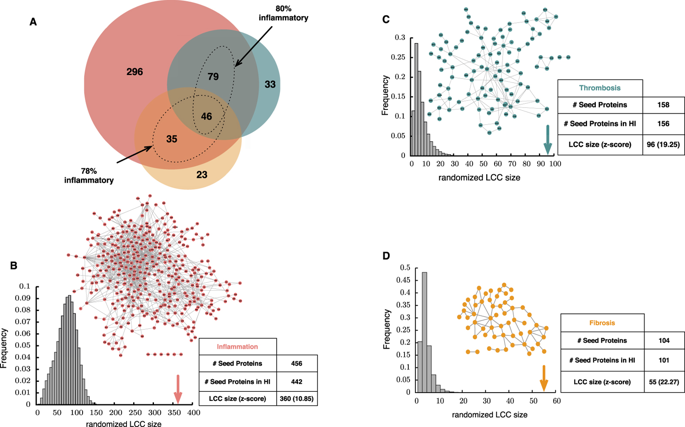Endophenotype Network Models: Common Core of Complex Diseases
By Susan Dina Ghiassian, Jörg Menche, Daniel I. Chasman, Franco Giulianini, Ruisheng Wang, Piero Ricchiuto, Masanori Aikawa, Hiroshi Iwata, Christian Müller, Tania Zeller, Amitabh Sharma, Philipp Wild, Karl Lackner, Sasha Singh, Paul M. Ridker, Stefan Blankenberg, Albert-László Barabási & Joseph Loscalzo
A limited number of key endophenotypes are common to all diseases. Most notable among them are inflammation, thrombosis, and fibrosis1. These endophenotypes reflect mechanisms that facilitate the organism’s adaptation to injury. Each has acute and resolving phases. The common goal of these underlying responses is to restore normal organ and organism function. In as much as these endophenotypes evolved to promote healing from acute injury, their implications for chronic injury or disease likely had a lesser role, if any, on their genetic selection. As a result, chronic overexuberant inflammatory, thrombotic, or fibrotic responses can yield organ impairment and adverse long-term effects that outweigh the acute benefits they provide2,3,4,5.
Inflammation, thrombosis, and fibrosis are pathologically linked6: inflammation can induce (accelerate) thrombosis, thrombosis can induce inflammation7,8, and fibrosis can result from resolving inflammation and thrombosis9. For these reasons, we explored the joint molecular network determinants of these endophenotypes, in particular aiming to identify those molecular subnetworks or mediators that are common to all, as well as those that are distinctive for each. In this way, we can define the determinants of the interplay among these common endophenotypes, as well as the determinants of heightened or deficient responses in them.
A complex cascade of molecular interactions occurs during inflammatory, thrombotic, and fibrotic processes, many of which remain poorly understood. Several molecules and cell types play a crucial role in these processes and exert their function through a network of interactions. Therefore, in this study we explore (a) network models of inflammation, thrombosis, and fibrosis; (b) their biological and topological crosstalk; and (c) the role of macrophages as central cellular mediators of these endophenotypes.

